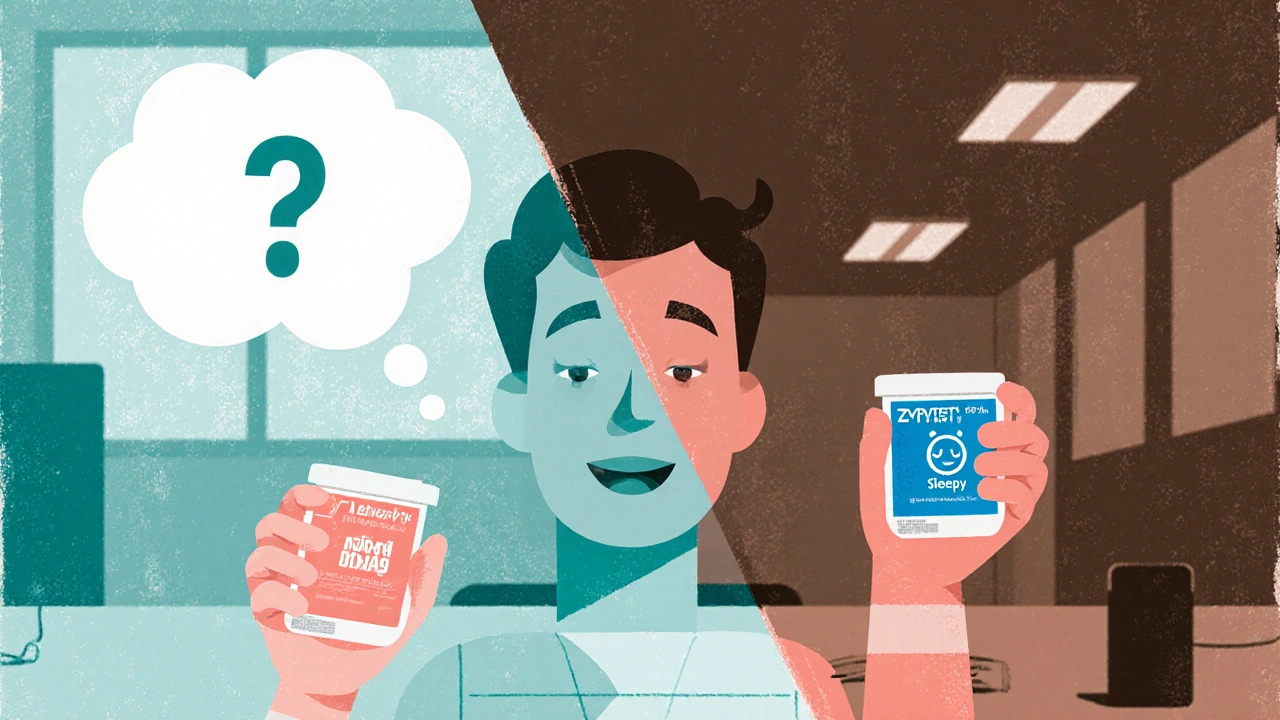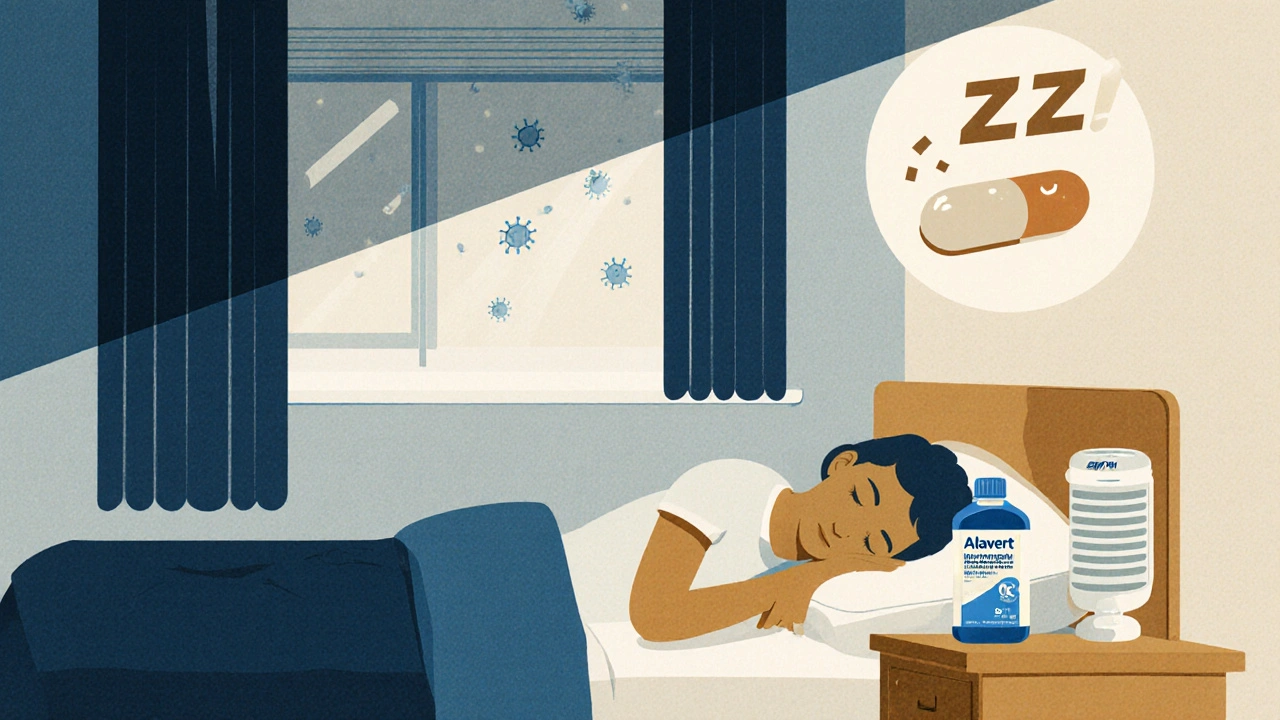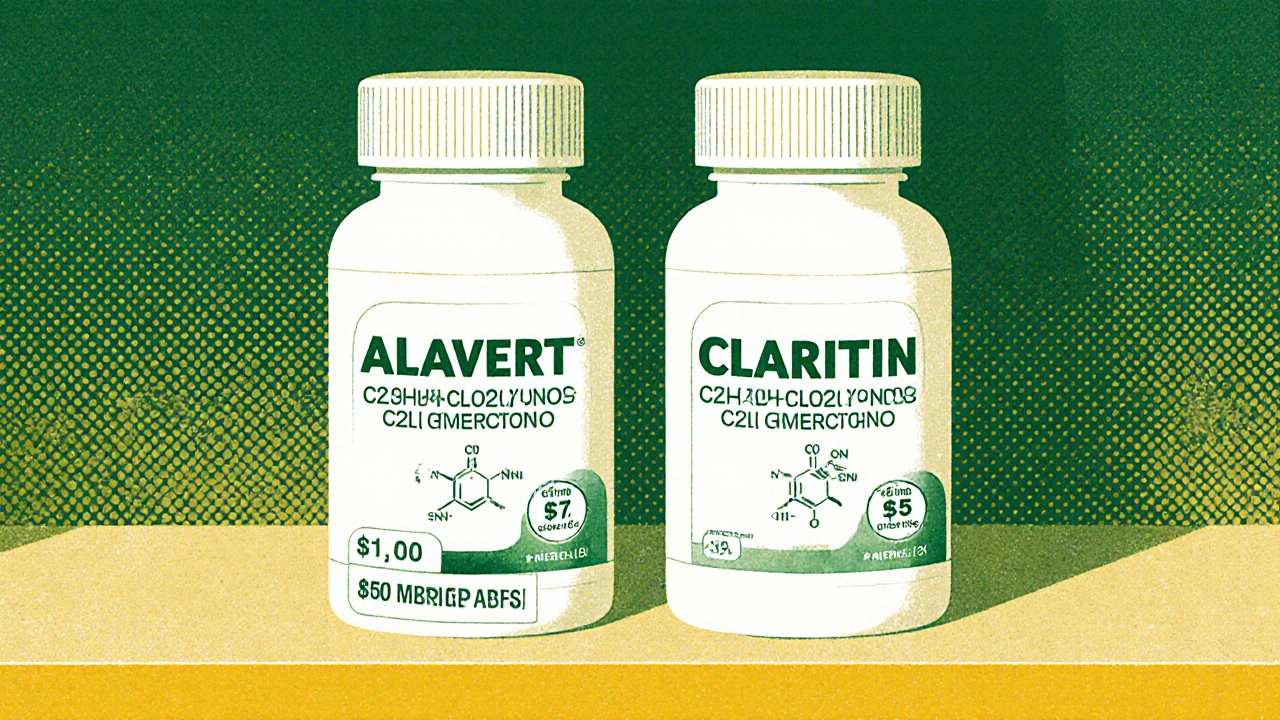When your nose runs, your eyes itch, and your throat feels tight, you just want relief-fast. Alavert, which contains loratadine, has been a go-to for millions because it’s non-drowsy, works all day, and costs less than brand-name options. But is it really the best choice? Or could another allergy pill work better for you? Let’s cut through the noise and compare Alavert with the most common alternatives you’ll find on pharmacy shelves.
What is Alavert, really?
Alavert is just the brand name for loratadine is a second-generation antihistamine that blocks histamine, the chemical your body releases during an allergic reaction. It was first approved in the U.S. in 1993 and lost its patent in 2002, which is why you now see it sold as a generic or under names like Alavert, Claritin, and others.
Loratadine starts working in about 1-3 hours and lasts 24 hours. Most people don’t feel sleepy after taking it, which is why it’s popular for daytime use. It’s approved for adults and children over 2 years old. The standard dose is 10 mg once daily.
It works well for hay fever, pet dander, dust mites, and mold allergies. But it doesn’t help much with nasal congestion. If your nose is completely blocked, you might need something else.
Claritin: Same drug, different brand
Claritin is the original brand name for loratadine. Alavert and Claritin are chemically identical. Same active ingredient. Same dosage. Same side effects. Same effectiveness.
So why does Claritin cost more? Marketing. Branding. Packaging. In the UK, Claritin is often sold as a branded product, while Alavert is usually the store-brand version. If you’re paying £5 for Claritin and £1.50 for Alavert, you’re paying for the name, not better relief.
Here’s the truth: If your doctor prescribed Claritin and you’re switching to Alavert, you’re not losing anything. You’re saving money.
Zyrtec (Cetirizine): Faster, stronger-but drowsier
Zyrtec’s active ingredient is cetirizine is another second-generation antihistamine, slightly more potent than loratadine. It starts working in about 1 hour, compared to loratadine’s 1-3 hours.
Studies show Zyrtec may be more effective for severe itching and hives. One 2018 review in the Journal of Allergy and Clinical Immunology found cetirizine provided slightly better symptom control in patients with moderate-to-severe allergic rhinitis.
But here’s the trade-off: about 14% of people taking Zyrtec report drowsiness. That’s double the rate of loratadine. If you drive, work with machinery, or need to stay sharp at your job, Zyrtec might not be your best pick.
For someone with mild allergies and no drowsiness issues, Zyrtec can be a good upgrade. For others, it’s overkill-or even a problem.
Allegra (Fexofenadine): The non-drowsy alternative
fexofenadine is the active ingredient in Allegra, another second-generation antihistamine that’s just as non-drowsy as loratadine. It’s often recommended for people who need maximum alertness, like pilots or surgeons.
Allegra works similarly to loratadine but has one big difference: it doesn’t interact with grapefruit juice. Loratadine can be affected by grapefruit, which may raise its blood levels and increase side effects. If you drink grapefruit juice daily, Allegra is safer.
Allegra also tends to work better for nasal congestion than loratadine, though it’s still not as strong as decongestants. In one head-to-head trial, fexofenadine and loratadine were equally effective for itching and sneezing, but Allegra showed slightly better results for stuffy noses.
It’s pricier than Alavert, but if you’re sensitive to side effects or drink grapefruit juice, it’s worth the extra cost.

Benadryl (Diphenhydramine): The old-school choice
Benadryl is a first-generation antihistamine. It works fast-within 30 minutes-and it’s cheap. But it also makes most people sleepy. Like, really sleepy.
It’s still used for quick relief of hives or sudden allergic reactions, but it’s not ideal for daily use. Drowsiness, dry mouth, blurred vision, and even confusion in older adults are common. It also wears off in 4-6 hours, so you’d need to take it 3-4 times a day.
If you’re looking for something to take before bed to help with nighttime allergy symptoms, Benadryl might help you sleep. But for daytime relief? Stick with loratadine or fexofenadine.
Comparing the options side by side
| Medication | Active Ingredient | Onset of Action | Lasts | Drowsiness Risk | Best For |
|---|---|---|---|---|---|
| Alavert | Loratadine | 1-3 hours | 24 hours | Low (2-3%) | Daytime relief, budget-friendly |
| Claritin | Loratadine | 1-3 hours | 24 hours | Low (2-3%) | Same as Alavert-just more expensive |
| Zyrtec | Cetirizine | 1 hour | 24 hours | Moderate (14%) | Severe itching, hives, if drowsiness isn’t an issue |
| Allegra | Fexofenadine | 1-2 hours | 24 hours | Low (2%) | Nasal congestion, grapefruit juice users |
| Benadryl | Diphenhydramine | 15-30 minutes | 4-6 hours | High (50-70%) | Nighttime use, sudden reactions |
Which one should you pick?
Here’s a simple decision guide:
- If you want the cheapest, reliable, non-drowsy option → Alavert (loratadine)
- If you have severe itching or hives and can handle slight sleepiness → Zyrtec
- If you drink grapefruit juice or have persistent nasal stuffiness → Allegra
- If you need fast relief for a sudden reaction and don’t mind being sleepy → Benadryl
- If you’re paying more than £2 for loratadine → switch to generic
Most people with seasonal allergies do fine on loratadine. It’s the baseline. If it doesn’t fully control your symptoms, try switching to another option before adding nasal sprays or eye drops.

What if Alavert doesn’t work?
If you’ve tried Alavert for 3-5 days and your symptoms haven’t improved, you’re not alone. About 20-30% of people don’t respond well to loratadine. That doesn’t mean you’re allergic to antihistamines-it just means your body responds better to something else.
Try switching to Zyrtec or Allegra. If that still doesn’t help, your allergies might need a different approach. Nasal corticosteroid sprays like fluticasone (Flonase) or mometasone (Nasonex) are more effective for congestion and inflammation. They take a few days to work but are far more powerful for long-term control.
Also, check your environment. Are you sleeping with pets? Is your home humid? Are you exposed to pollen in the morning? Sometimes, medication alone isn’t enough. Simple changes-like washing bedding weekly, using HEPA filters, or showering after being outside-can make a big difference.
Side effects to watch for
All these medications are generally safe. But here’s what to look out for:
- Loratadine/Alavert: Headache, dry mouth, tiredness (rare)
- Cetirizine/Zyrtec: Drowsiness, dry mouth, sore throat
- Fexofenadine/Allegra: Nausea, dizziness, menstrual cramps (rare)
- Diphenhydramine/Benadryl: Drowsiness, blurred vision, constipation, urinary retention (especially in older adults)
If you’re over 65, pregnant, or taking other medications (especially sedatives, antidepressants, or antifungals), talk to your pharmacist before switching. Some antihistamines can interact with blood pressure meds or thyroid drugs.
Final thought: Alavert isn’t the best-but it’s good enough
There’s no single "best" allergy pill. It depends on your symptoms, lifestyle, and budget. Alavert (loratadine) isn’t the strongest, the fastest, or the most advanced. But it’s the most balanced. It’s affordable. It’s safe. It doesn’t knock you out. And for most people, it’s all they need.
If you’re paying extra for a brand name, you’re not getting better results-you’re just paying for the label. Stick with Alavert unless you have a clear reason to switch. And if symptoms persist, don’t just take more pills-talk to a pharmacist. There might be a better solution waiting for you.
Is Alavert the same as Claritin?
Yes. Alavert and Claritin both contain the same active ingredient: loratadine. They work the same way, at the same strength, with the same side effects. The only difference is the brand name and price. Alavert is usually cheaper because it’s the generic version.
Can I take Alavert every day?
Yes. Loratadine is approved for daily use in adults and children over 2 years old. Many people take it year-round during allergy season or if they have year-round allergies like dust mites or pet dander. It doesn’t cause tolerance-you won’t need to increase the dose over time.
Does Alavert help with congestion?
Not really. Alavert treats sneezing, itching, and runny nose, but it doesn’t open up a stuffy nose. For congestion, you’ll need a decongestant like pseudoephedrine or a nasal spray like fluticasone. Some products combine loratadine with pseudoephedrine-look for "Claritin-D" or "Alavert-D" if you need both.
Is Zyrtec better than Alavert?
Zyrtec (cetirizine) can be slightly more effective for severe itching and hives, and it works faster. But it causes drowsiness in about 1 in 7 people. If you don’t mind feeling sleepy, Zyrtec might be better. If you need to stay alert, Alavert is the safer choice.
Can I take Alavert with other medications?
Loratadine has few interactions, but it can be affected by grapefruit juice, ketoconazole, and erythromycin. If you’re taking antibiotics, antifungals, or heart medications, check with your pharmacist. Avoid alcohol-it can increase drowsiness, even though Alavert is non-drowsy for most people.


Reginald Matthews
I've been on loratadine for years, and it's been perfect for my seasonal stuff. No drowsiness, no fuss. I tried Zyrtec once and felt like I'd been hit by a truck at 2 p.m. Just stick with the cheap stuff unless you're really struggling.
Also, if you're paying more than $5 for a 30-day supply of Claritin, you're getting scammed. Generic is literally the same pill in a different box.